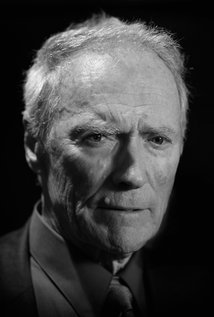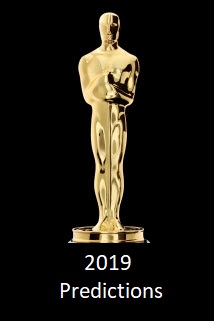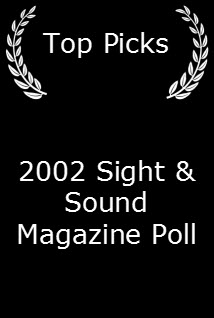Once Upon a Time ... in Hollywood (2019)


Content by Tony Macklin. Originally published on July 30, 2019 @ tonymacklin.net.
Once Upon a Time ... in Hollywood is a Quentin Tarantino doppelganger. It mixes the subdued Tarantino with the boisterous Tarantino. It's a mixed bag of an odd couple.
The first two hours of Once Upon a Time .. in Hollywood are surprisingly unmemorable. Much is labored and undistinguished. Part of that is because generally the film lacks irony. It is hard to satire banality. Quentin certainly doesn't emphasize satire.
Quentin has a soft spot for mass entertainment, whatever its quality. The passage of time doesn't add to the satire - dated is dated. Many of our past loves don't come alive in the present.
The edge and flair that one may expect from Tarantino is mostly absent in much of the film. Memory seems to have dulled them.
Perhaps the only scene in the first hour that has Tarantino's bold, creative stamp is the fight between Cliff Booth (Brad Pitt) and Bruce Lee (Mike Moh). It possesses the imagination and energy we expect from Quentin.
In the second hour, the scene between the hippies and Cliff at the Spahn Ranch has some tension. It winds up with a nice punch.
The film lacks the recognizable Tarantino dialogue that usually is unique and imaginative. There's a conversation between an eight-year old actor (Julia Butters), but it's more coy and contrived than vital. An occasional line has the Tarantino glint - a stuntman says, "Everyone don't need a stuntman." Most of the dialogue is merely serviceable.
But have no fear, Tarantino still is here - at the end. There's the climax.
The ending is pure Quentin Tarantino. It possesses his cinematic madness - outrageous, brutal, and entertaining. No one else could have done it.
And, as effective conclusions do, it reverberates back through the film.
Once Upon a Time ... in Hollywood is set in 1969. It features two friends - actor Rick Dalton (DiCaprio) and stuntman Cliff Booth (Brad Pitt at his most engaging). Rick, who starred in a successful television show Bounty Law is an actor who now appears on television shows and movies as a bad man. His career is on the skids. He almost desperately is looking for a way to redeem his career.
Cliff is an out-of-work stuntman, who serves as Rick's driver and handyman, since Rick lost his driver's license, because of an accident. Even though their situations are different, they are friends.
Rick lives next door to Sharon Tate and Roman Polanski. [Tate was murdered by the Manson Family in 1969.] One may have qualms about how Tarantino manipulates Tate in his movie, but that's his style.
Hollywood in 1969 - Tarantino views the culture through various lenses.
There are multiple ways the audiences will view Once Upon a Time ... in Hollywood. That's the nature of the film.
The actors serve their director well. Only Al Pacino as an agent does not seem up to his usual standard.
DiCaprio and Pitt are fine, as is Margot Robbie as Tate. Underrated actor Damian Lewis is especially credible as Steve McQueen in a brief role. In the film, Rick had a rivalry with McQueen. He says he was up for McQueen's part in The Great Escape (1963). We see footage of Rick trying-out in a scene with German officers.
Rick had a successful television show Bounty Law. In actuality McQueen had a successful television show about a bounty hunter in Wanted: Dead or Alive from 1958 to 1961.
In his screenplay Tarantino has Rick and Cliff go to Italy for Rick to star in Spaghetti Westerns for a director named Sergio. Sergio Leone directed Once Upon a Time in the West (1968) and then Once Upon a Time in America (1984).
In Once Upon a Time ... in Hollywood, Tarantino often flirts with actuality.
Tarantino also uses doppelgangers effectively. There are many couples or pairs, 2 pregnant women, 2 cans of dog food, 2 countries - America and Italy -, 2 stuntmen, 2 different leaders of a horse ride tour for a man and his wife, 2 couples going to watch FBI show on television, 2 cars in driveway, and on and on. There are mirrors and the images that they reflect.
Tarantino uses deception and uncertainty. Did Cliff really kill his wife? Is George (Bruce Dern) really blind? What is true?
And, of course, Quentin is self-referential. During the final credits, Rick is doing a commercial for Red Apple cigarettes. Red Apple cigarettes is a fictional brand that appeared in 8 Tarantino films.
Tarantino also uses symbols smartly. Feet are symbolic in Once Upon a Time ... in Hollywood. There many shots of walking feet, and Sharon Tate's bare feet on the seat in front of her as she delightedly watches herself on screen in a theater showing The Wrecking Crew.
Quentin Tarantino thinks movies can change history. Wouldn't that be nice?
In 2019 movie audiences are starved for movie sustenance.
Once Upon a Time ... in Hollywood offers them a great dessert.








